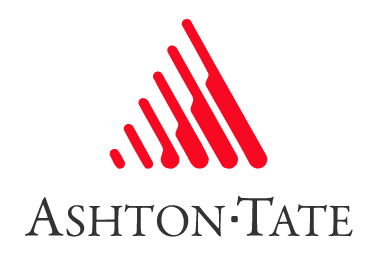 dBASE
dBASE
dBASE was perhaps the most well-known and well-used database management system during the DOS era. It competed most directly with FoxBase (later FoxPro), Clipper, Paradox, Rbase, and Clarion.
The product began life on the PTDOS platform in 1978 where it was called Vulcan. It was written by C. Wayne Ratliff and Jack Hatfield as a modified version of RETRIEVE which was a database written in-house at the Jet Propulsion Laboratory. They renamed it JPLDIS, and ported to the CP/M operating system.
dBASE II
George Tate and Hal Lashlee had formed two successful software distribution companies, Discount Software and Software Distributors. In 1980 they entered into an agreement with Ratfliff to market his Vulcan database product, and formed a new company, Ashton-Tate, to do it, and rebranded Vulcan as dBASE II. It was the same version as Vulcan, but for marketing purposes they added the 'II' as it sounded like it was less-buggy than a first-release product. It was regarded as one of the killer applications for CP/M that achieved great success, as license prices were around $700 per installation for dBASE II. At the time of conception Ashton-Tate had been a garage based company but quickly grew into one of the 'big three' software companies, alongside Lotus Development and WordPerfect.
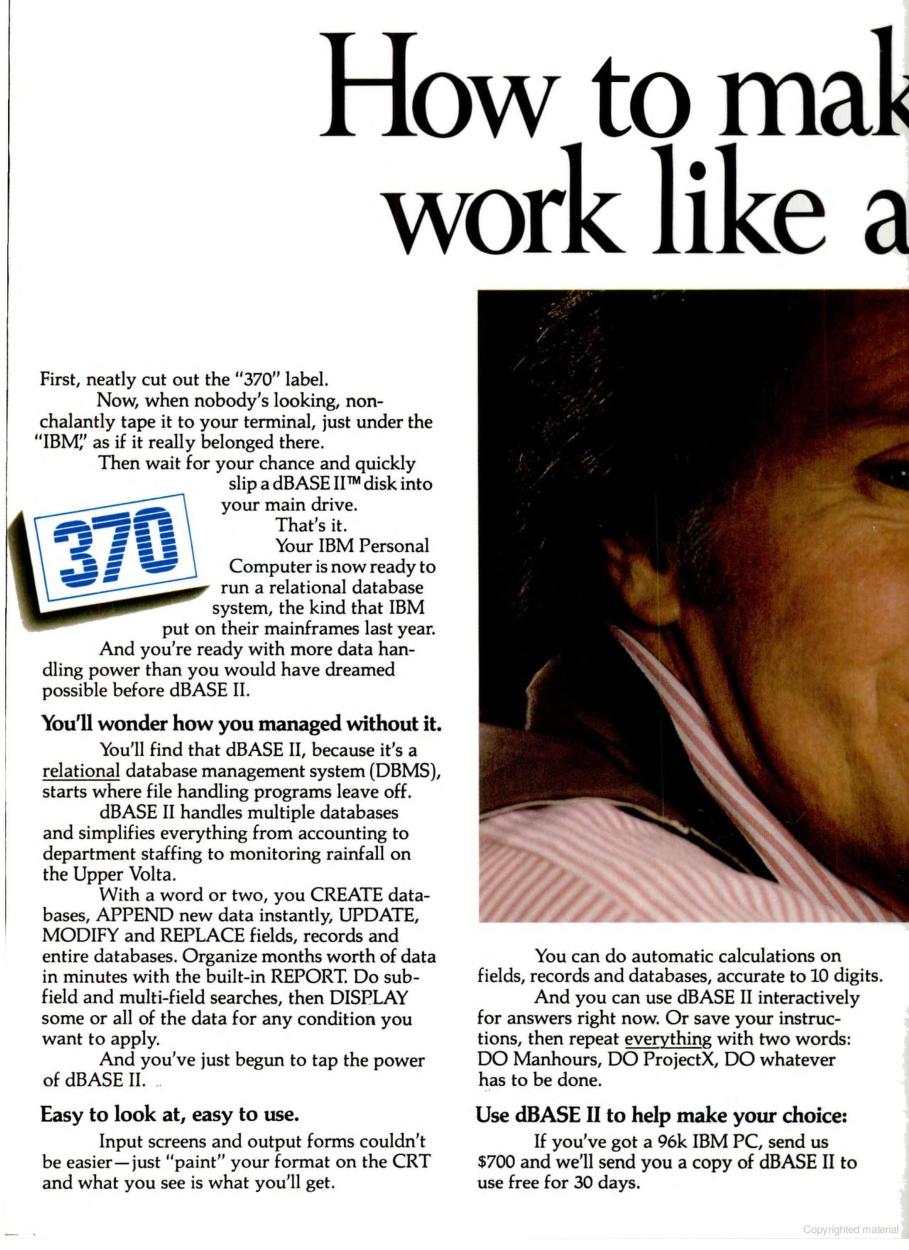
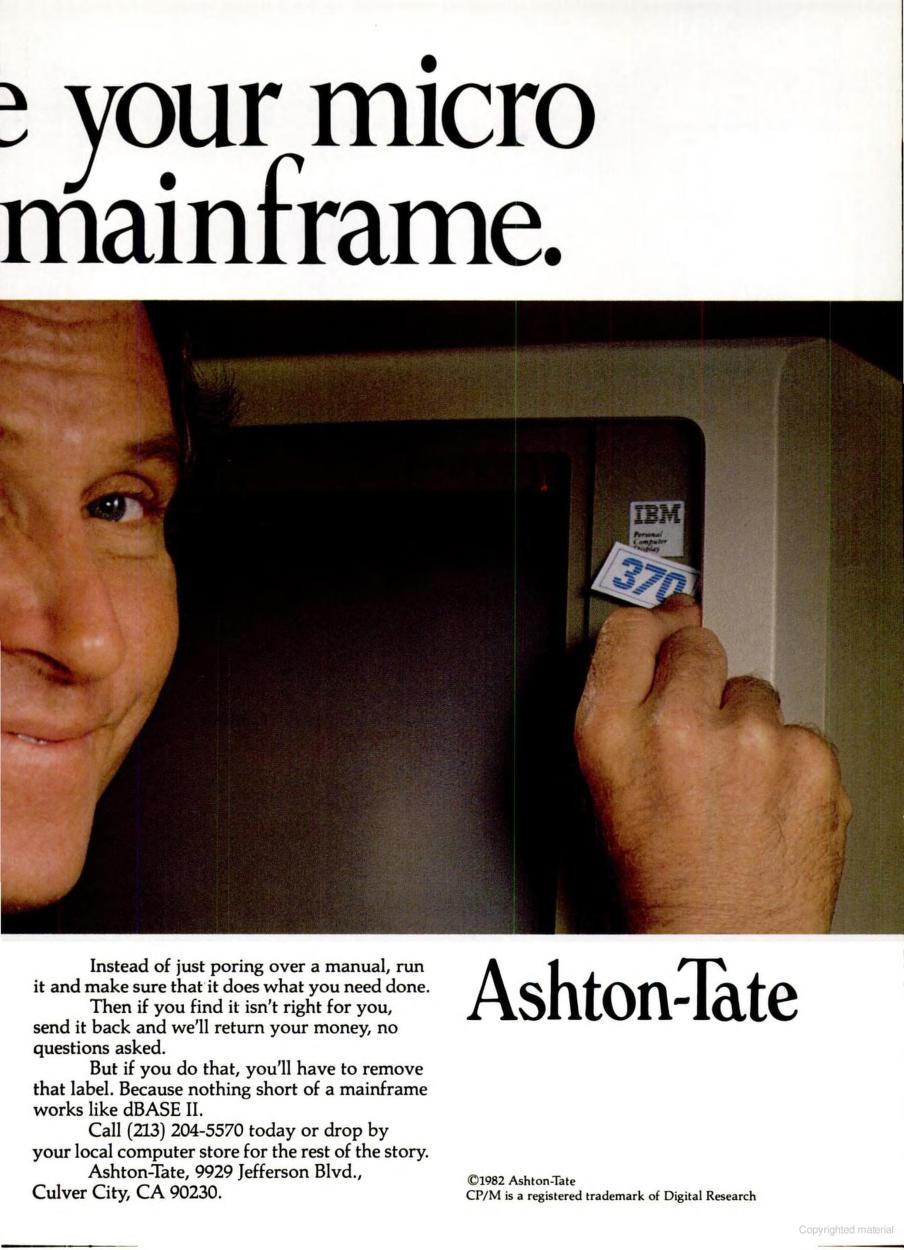
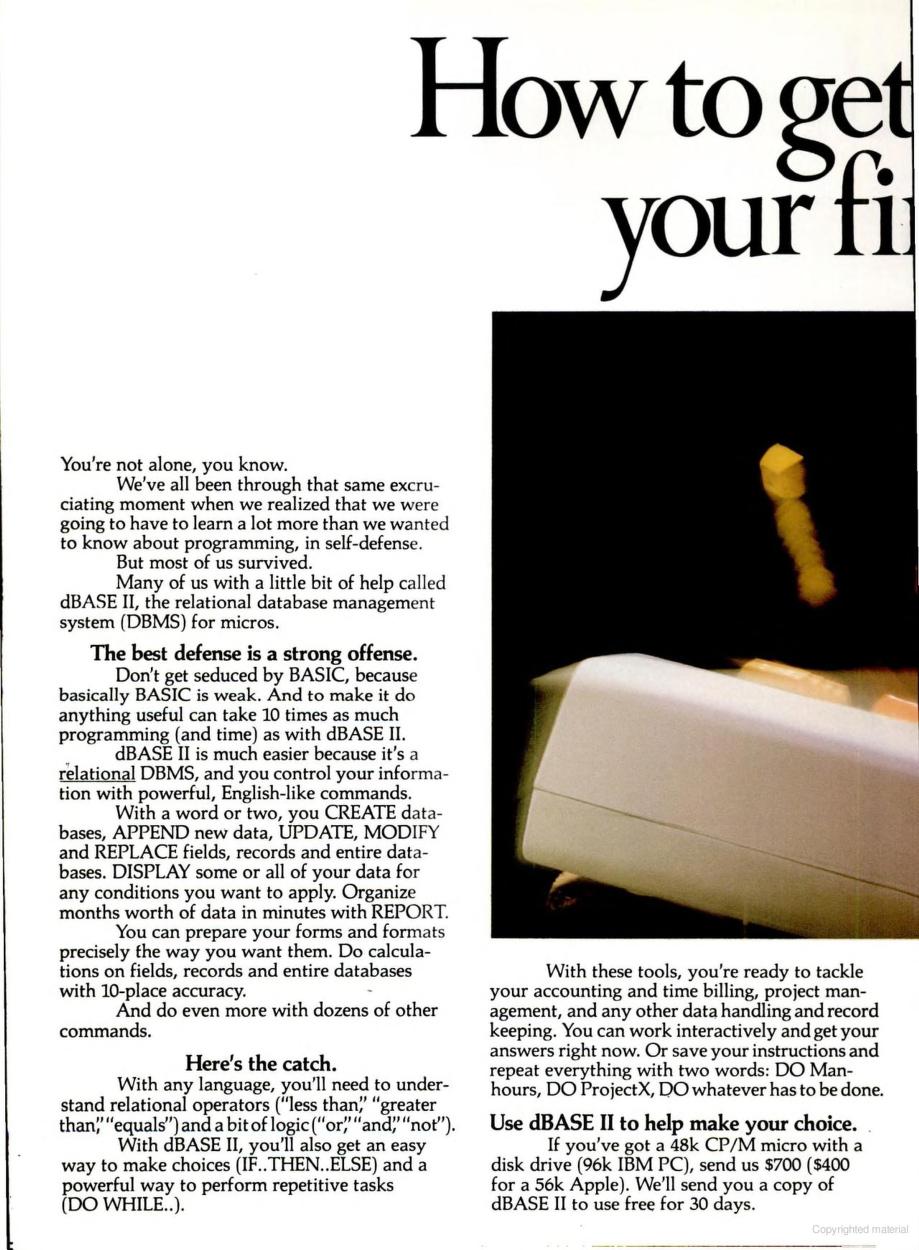
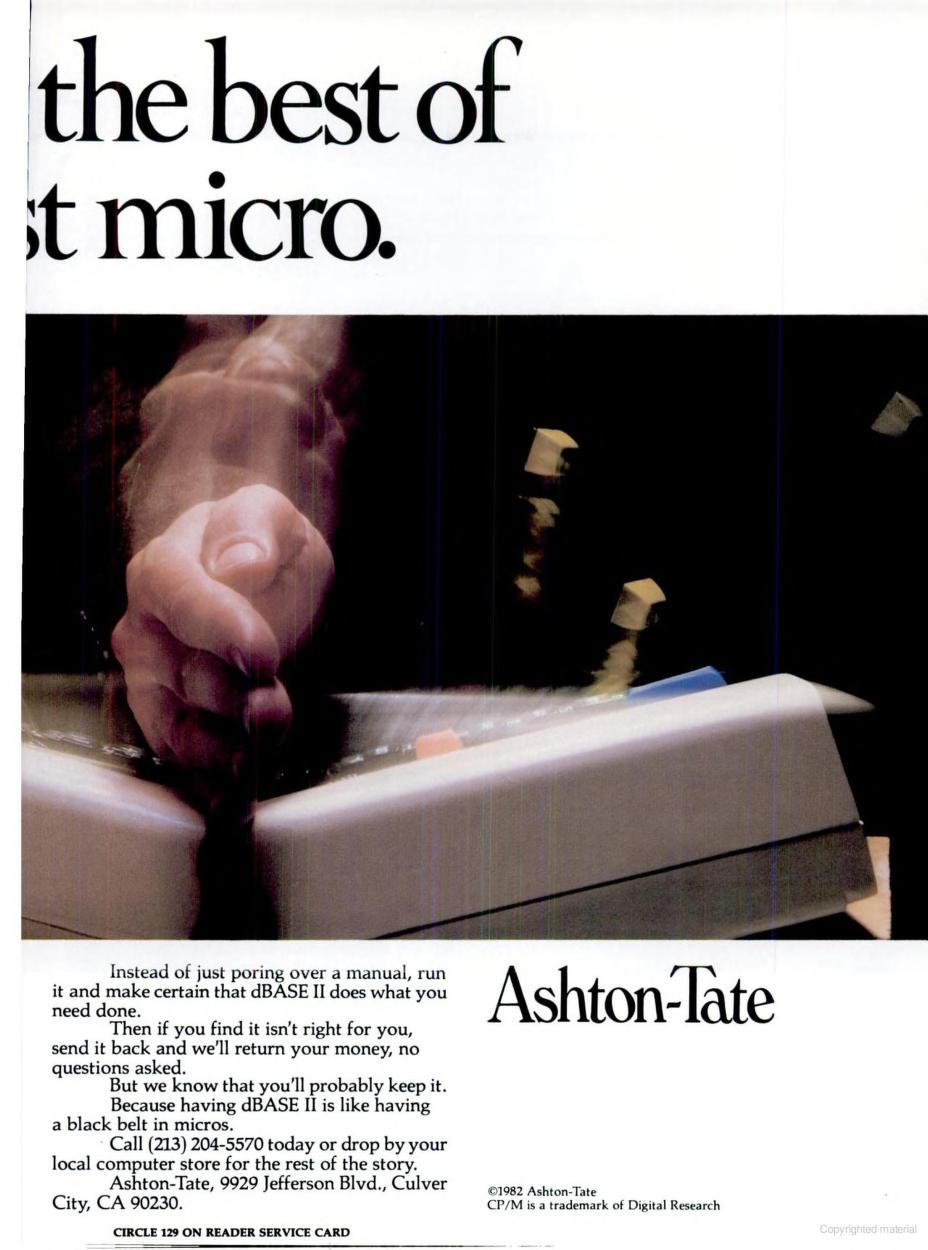
Two advertisments of dBASE II, August 1982 (left) and January 1983 (right)
A year later, IBM commissioned Ashton-Tate to port dBASE II for use on their new IBM PC, and went on sale in the Autumn of that year. Because of the built-in programming language, VARs (Value Added Resellers) licenced dBASE II and added their own functionality for specific use and sold complete systems with it. Ashton-Tate released the "dBASE II RunTime" in 1983, which further helped VARs to use dBASE for writing applications at a lower price point.
dBASE III
In 1983 dBASE II was rewritten from its assembly language roots in C in order to make it easier to port to new platforms. Upon its launch as dBASE III in 1984, it added a lot of new functionality. Sadly it ran much slower than dBASE II. Several quick minor upgrades later, the product was stable again. It sold very well and Ashton-Tate saw their company grow to over 500 employees with revenues in excess of $40 million a year. Over the next two years, dBASE III would also be ported to the Apple II and CP/M.
Due to dBASE's success, its programming language and structure were copied by a number of other companies for their own databases. These include FoxBase+, which later became FoxPro, and Clipper.
dBASE III+
In early 1986, dBase III+ was released at a list price of $695 for single users, or $995 for the multi-user version. The street price was closer to $399 for the single user version. Still with the core architecture of dBase II at its heart, it was starting to show these limitations when compared against newer, more modern designs of relational databases. This version added a menu bar at the top and status bar at the bottom which improved the product's ease of use. Views contain a snapshot of the current working environment, including all open database and index files, any active filters, any query files and screen formats, and the complete list of set options. Error messages were now more logically-worded, making error handling much quicker. dBase III+ was copy-protected with the first disk being a 'key disk', but came with an install program for installation to a hard disk. Amazingly for 1986, the program could still run on machines with just 256 KB of RAM!
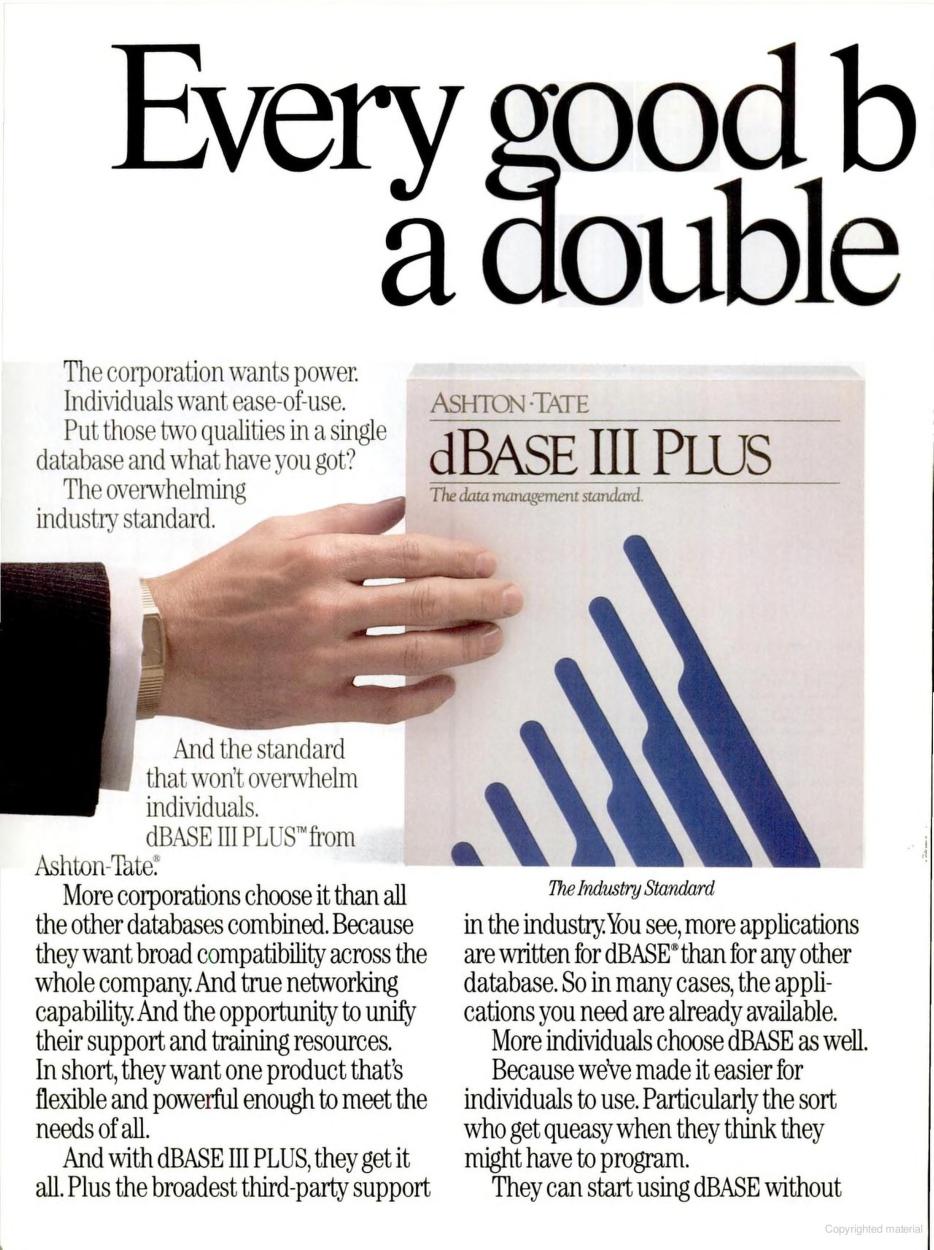
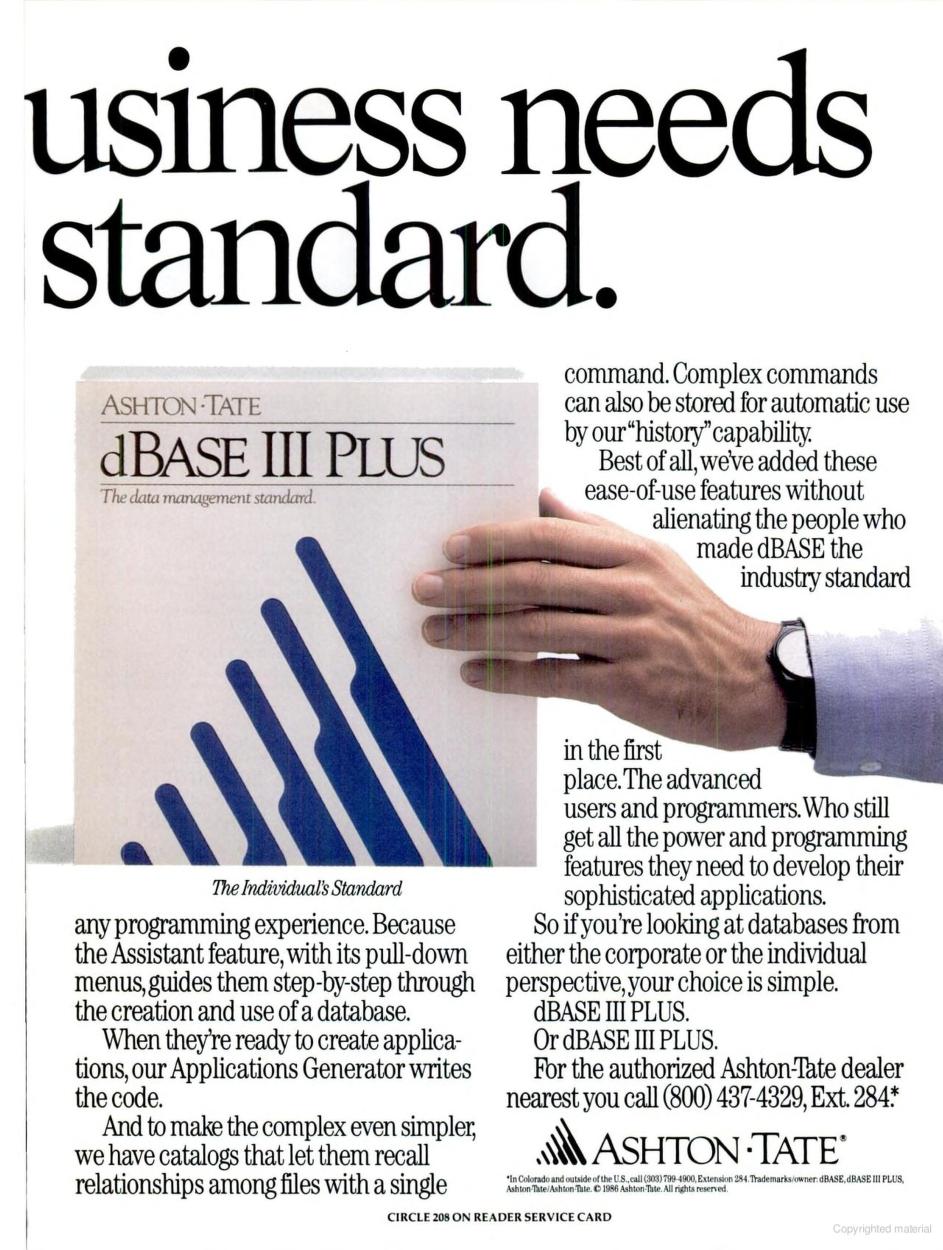
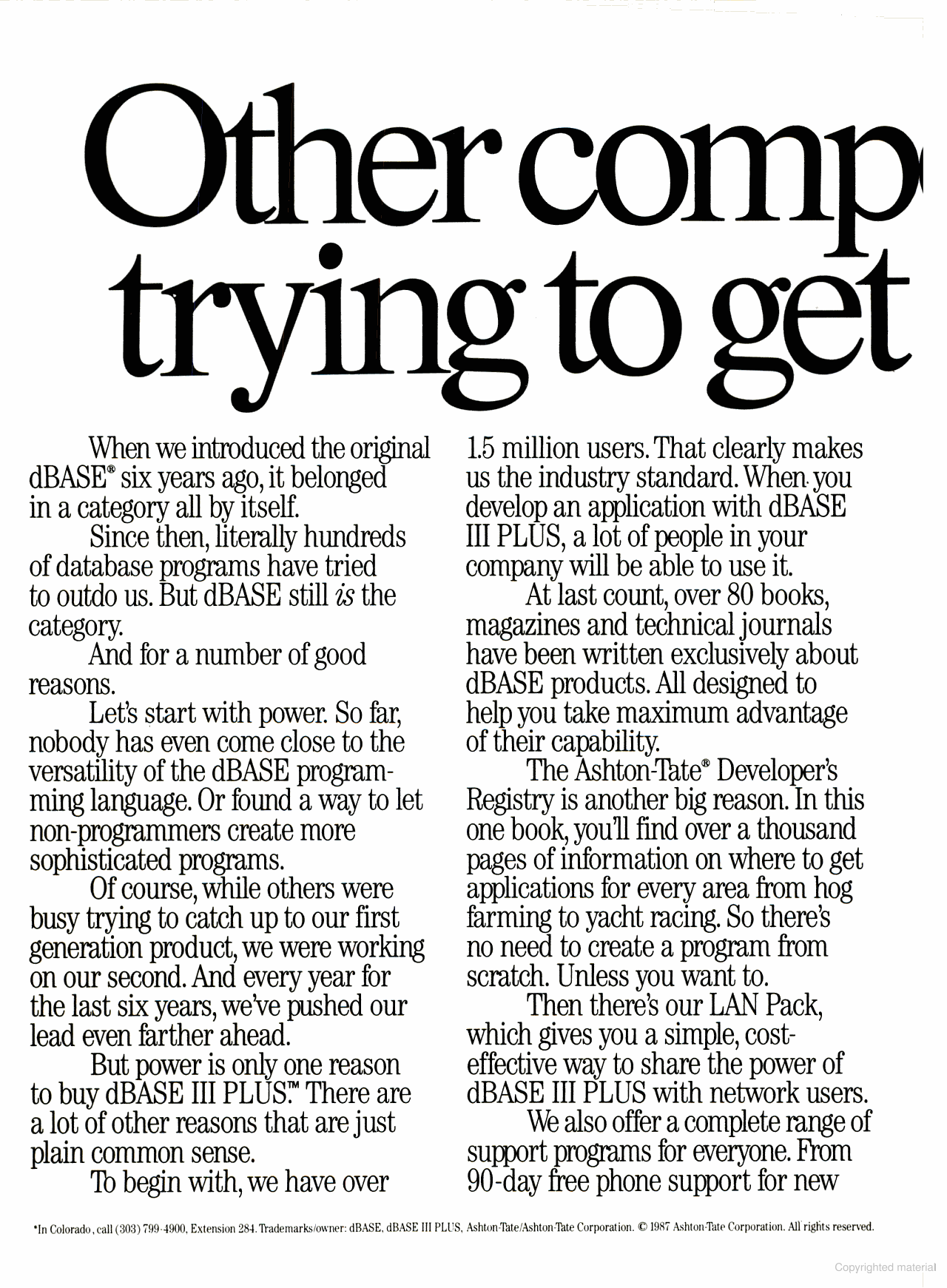
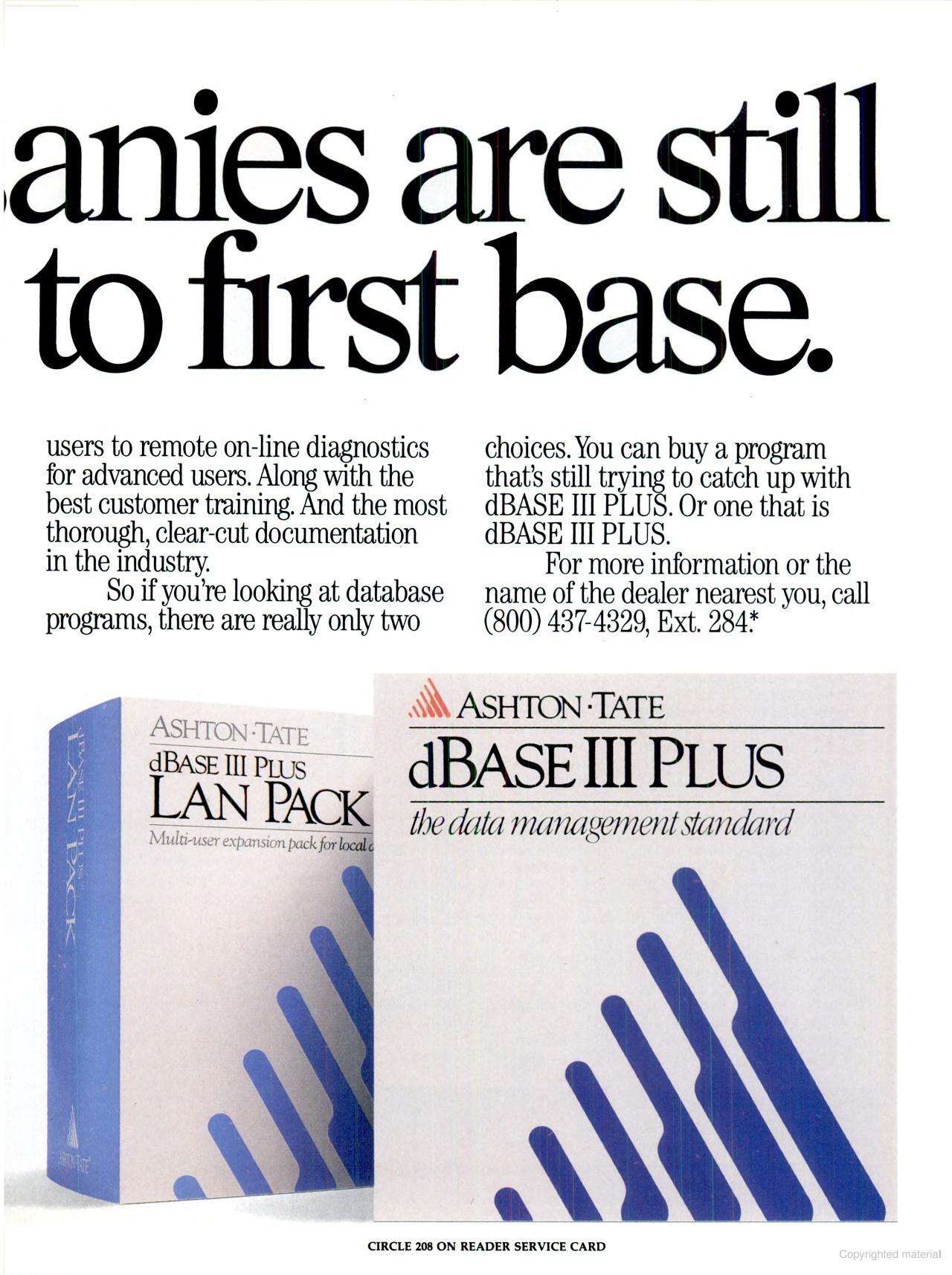
Two advertisements of dBASE III Plus, April 1987 (left) and November 1987 (right)
dBASE IV
In 1988, Ashton-Tate finally launched dBASE IV after numerous delays. By this time, FoxPro was starting to gain more ground in the database market. The cost of dBASE IV was between $795 and $1,295. It offered "Query by Example" like Paradox, an improved user interface over dBASE III+, and a SQL interpreter.
Confidence in dBASE plummeted with the release of dBASE IV, which was unstable and lacking in functionality compared to other offerings at the time. This caused consumers (mostly businesses) to migrate to the new, better database products.
Dbase IV was such an improvement over DBase III Plus that its introduction was met mostly with enthusiasm. The Control Center was actually easy to use - a Dbase first. The query-by-example module that Paradox made so popular on the PC was a welcome move. Dbase IV introduced a more versatile screen and reports designer, and replaced an obscure utility with a real applications generator. The production index file was perhaps least visible but very significant. It was the first step taken by Ashton-Tate to eliminate the need for continual reindexing as a characteristic of Dbase applications.
As Dbase IV received a more rigorous workout over time, however, the importance of all these issues was undercut by a steady stream of glitches. In a few short months, owners of Dbase IV found themselves participants in one of the biggest unplanned beta-test projects the software industry has ever seen. " Info World, January 1992
This same year, Ashton-Tate filed a lawsuit against Fox Software and SCO (Santa Cruz Operation) who marketed the UNIX and XENIX versions of the Fox products, on the grounds of copyright infringement. This, and a flawed design of dBase IV 1.0 caused dBase to lose ground in the market which resulted in financial difficulties for Ashton-Tate. They had previously been responsible for setting the language standard for databases, known as the dBase standard, but this soon led to a rival community comprising Fox Software, Nantucket (makers of Clipper), Alpha Software, and more, creating a broader standard which was dubbed "xBase", and included such things as an anticipated data file format, index file formats and would soon extend to data dictionaries. The lawsuit was thrown out in December 1990 because Ashton-Tate had failed to disclose that dBASE had been based in part on the public domain JPLDIS.
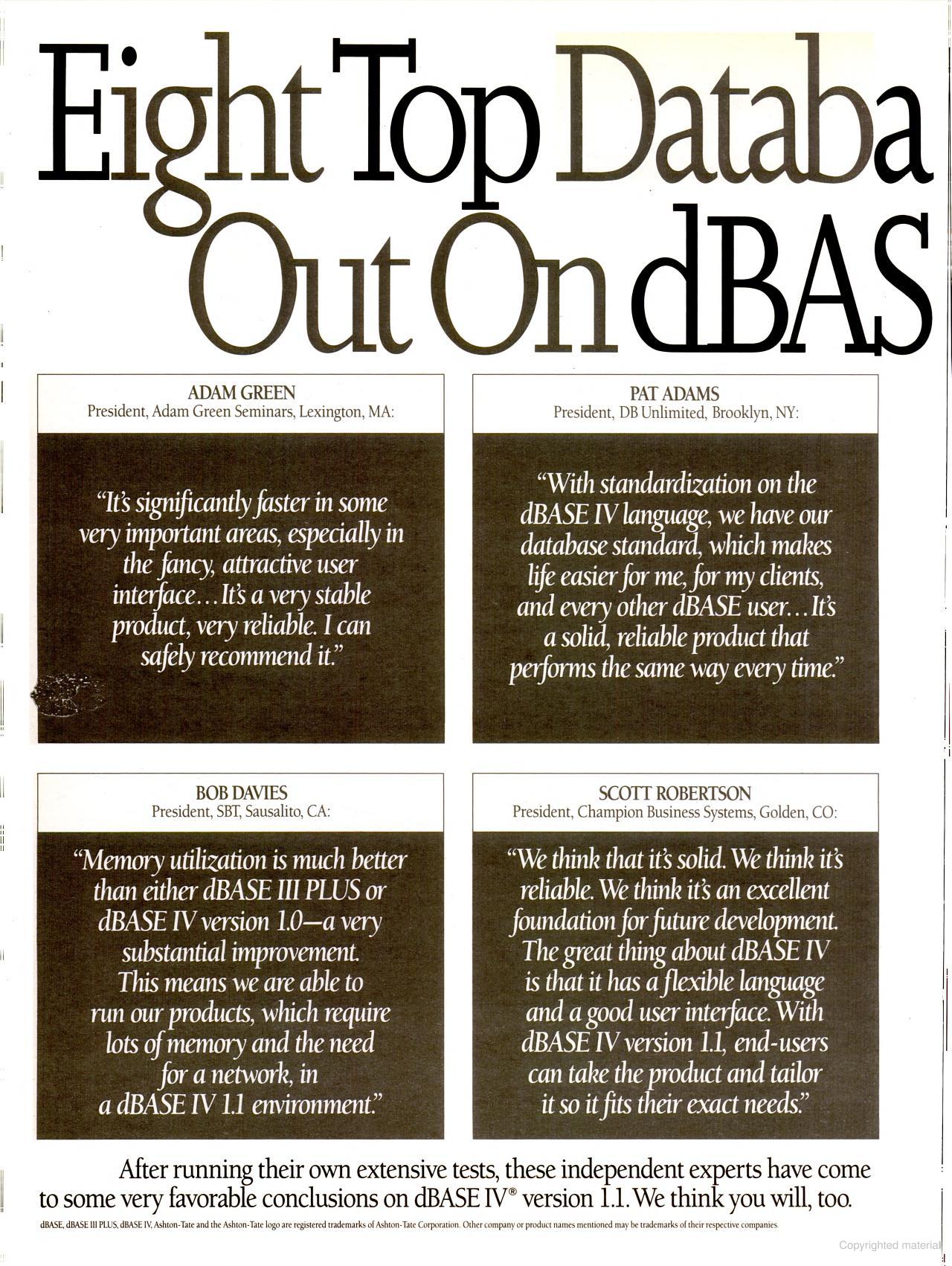
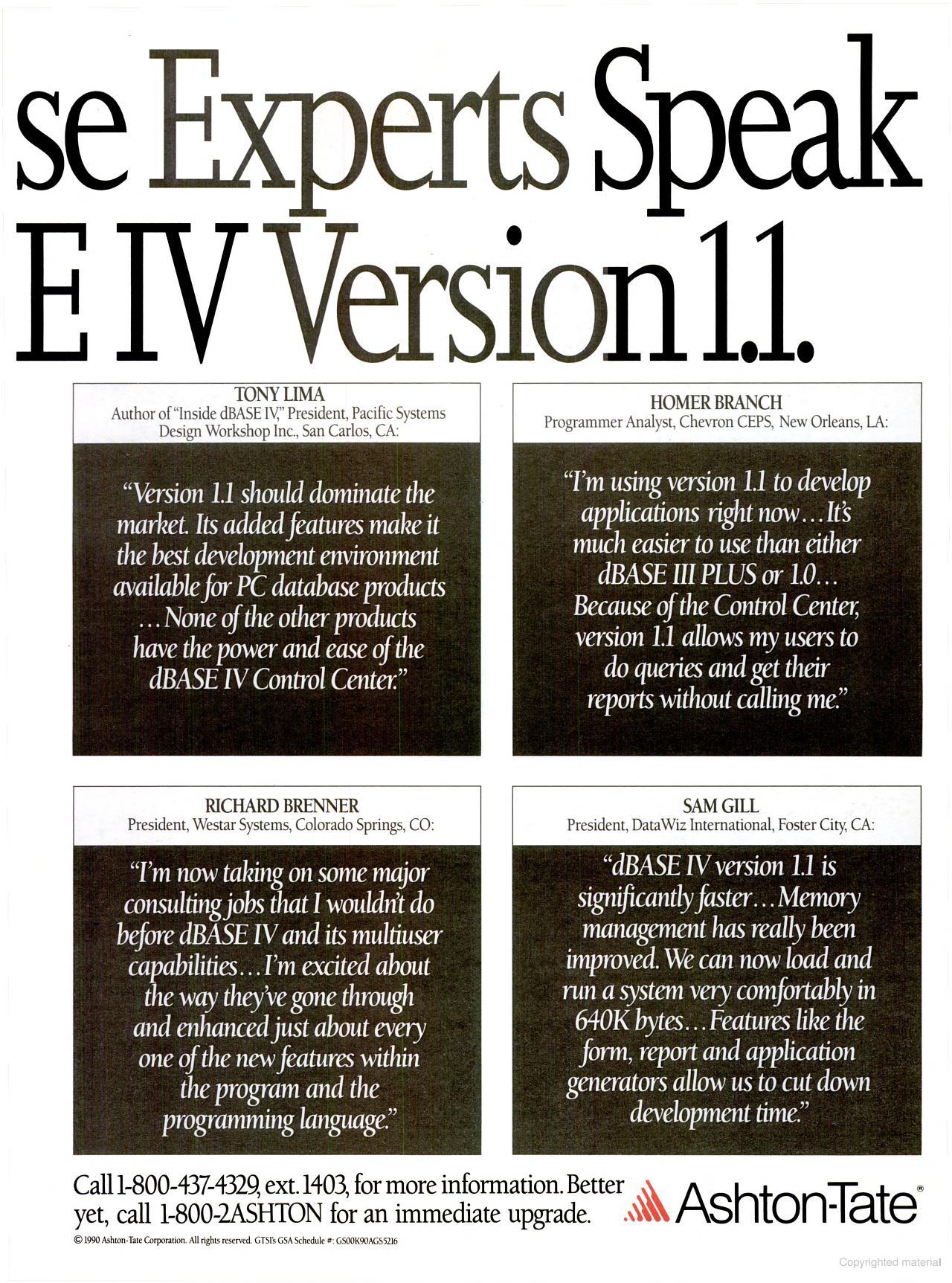
An advertisement of dBASE IV v1.1 (September 1990)
The Borland Acquisition
In September 1991, Borland International bought out Ashton-Tate, including their dBase and InterBase databases. dBase had been the market leader in the world of databases for many years. After the buyout, Borland committed to continuing and expanding the power of the XBase standard with new versions of dBase and InterBase.
The data base market was in fierce competition at this time, and in 1992 Microsoft launched Access having acquired Fox Software and their FoxPro database product. Ashton-Tate's acquisition turned out to be very costly for Borland, with its product line not designed well for an evolutionary move to a Windows GUI.
The early 90s saw a transition of Borland away from being the dominant force across all its product categories. They still held a solid market share in the software development tools space, but dBase was earning it the majority of its overall revenues, and with no Windows version in sight in 1991, in 1992 they embarked on a complete rewrite.
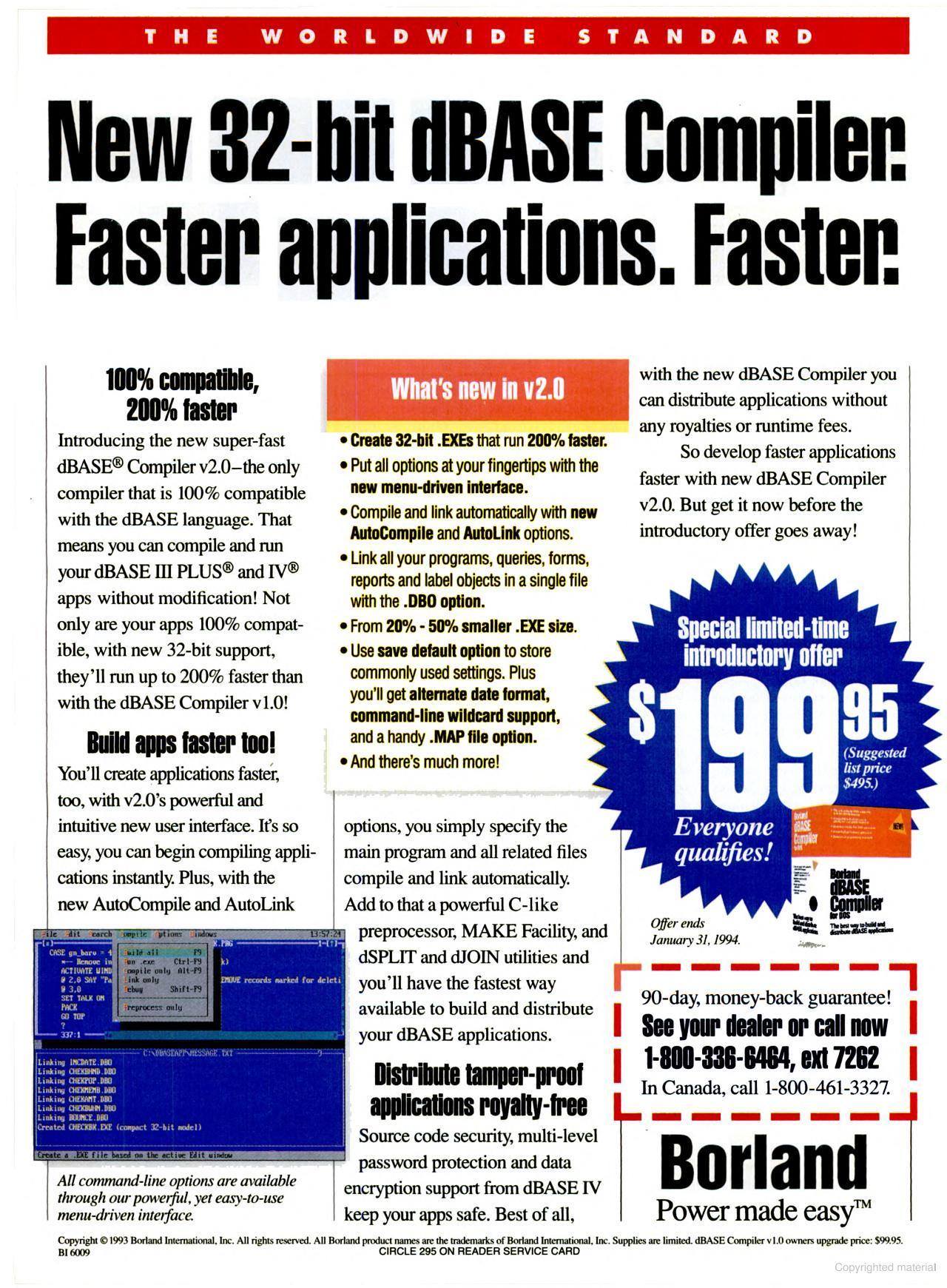
An advertisement of Borland's dBase Compiler, November 1993